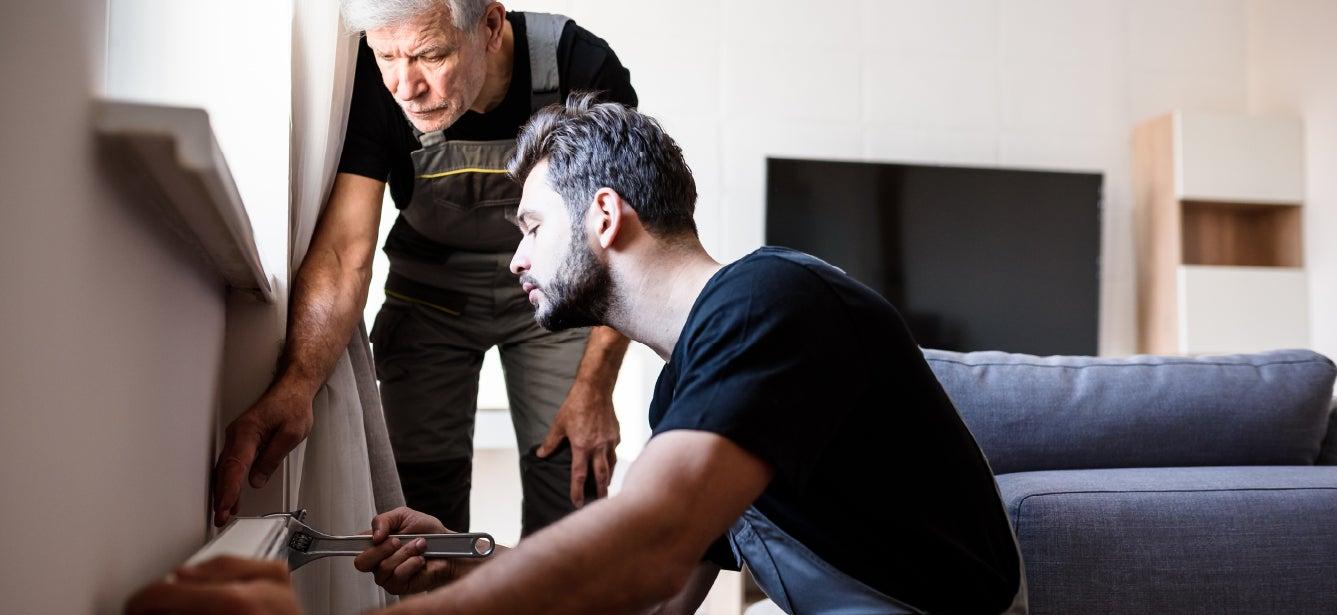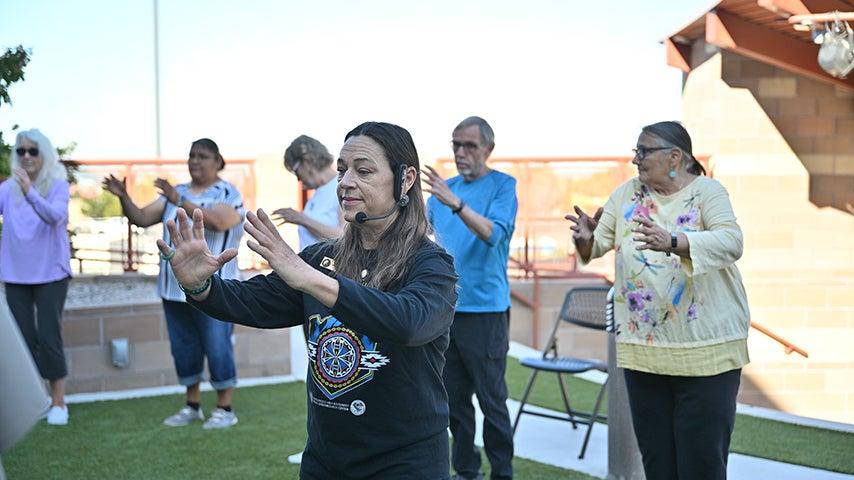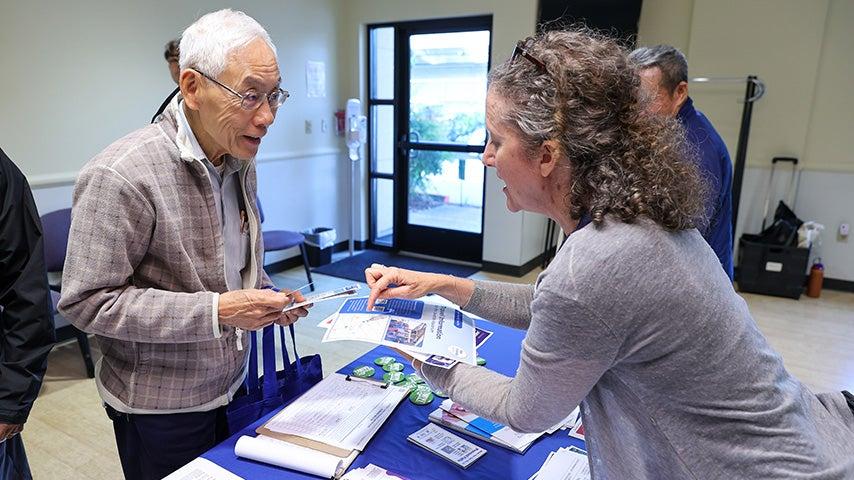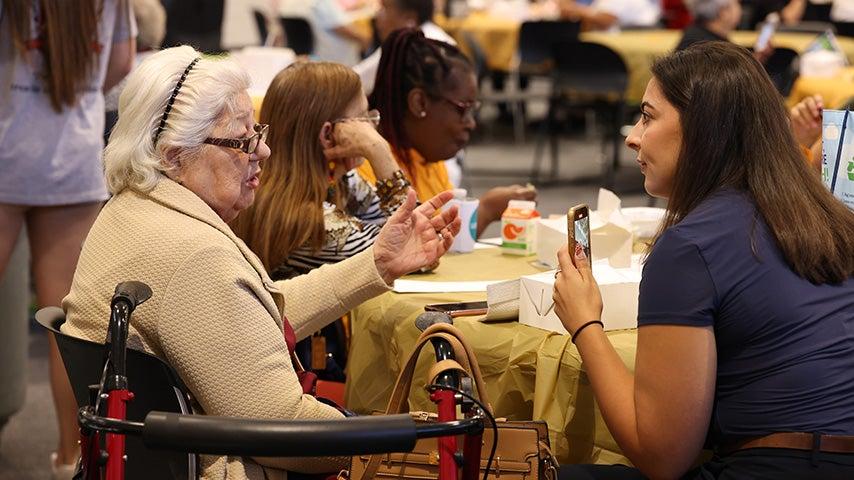
Related Topics
Removing home hazards can be a powerfully effective way to reduce an older adult's risk of falling.
Most falls, which are a leading cause of injury and nursing home placement for older adults,1, 2, 3 happen at home. The Home Hazard Removal Program (HARP), an Administration for Community Living (ACL) Title III D approved evidence-based falls prevention program, can help prevent falls among older adults at high risk of a fall by removing home hazards.
How does HARP work to reduce falls?
As part of HARP, older adults who are screened to be at high risk for falls are seen for two or three visits by an occupational therapist (OT) in their home.
During the first visit, the OT completes assessments of the older adult’s abilities—things like gait, strength, range of motion, and vision. Next, the older adult and the OT work together to identify hazards in the home that increase the older adult’s risk of having a fall. Then, the OT and the older adult identify appropriate solutions to remove those hazards and increase safety in the home.
How has HARP helped older adults reduce their risk of falling?
HARP has proven an effective falls prevention strategy for participants.4
For example, Ron, an 85-year-old man with cataracts and Parkinson disease, was living in a senior housing apartment. A HARP assessment found hazards in his home included:
- Low lighting
- Loose throw rugs
- Clutter
Also, Ron's apartment had grab bars that had been installed by the building contractor to meet accessibility standards, but he was having trouble seeing those grab bars, and they were not installed ideally for his needs. There were grab bars behind the toilet and inside the shower, but Ron also needed support beside the toilet and when getting into and out of the shower.
The OT worked with the building’s maintenance team to have a grab bar installed by the shower entrance. Ron chose toilet safety rails for hand support by the toilet because he could use them to push himself up. Ron also chose to have battery-powered automatic nightlights hung on the wall.
Ron likes having throw rugs, so instead of picking them up, he and the OT decided to use double-sided tape to secure them to the floor. Now he is able to walk safely around the apartment and get into and out of his shower without worrying about falling.
Gwen, 70, another HARP participant, lived with her husband in a two-story house. She had decreased lung capacity, mobility, and endurance. There was no bathroom on the first floor, and Gwen had fallen multiple times going up and down the stairs. The staircase was narrow and steep, and it did not have railings on both sides.
Options to improve her ability to safely get to the bathroom included:
- Adding railings to the stairs
- Installing a toilet on the first floor
- Using a 3-1 commode (a device that can be used as a toilet safety frame or a standalone temporary toilet) when on the first floor
- Installing a walk-in bathtub
Gwen chose to use the 3-1 commode because she could borrow one from her neighbor at no cost. Since getting the commode, she has not had any falls on the stairs. She also installed a railing on the staircase so she has something to hold onto when she goes up and down the stairs every night and morning.
Mary, an 69-year-old HARP participant undergoing breast cancer treatment, lived alone in a townhouse. She struggled with incontinence, fatigue, and muscle weakness—all of which increased her chance of having a fall. Fall hazards in Mary's home included lack of hand support by her bed and the distance from her bed to the bathroom, especially at night when she needed to get up multiple times to use the bathroom. On the way to the bathroom, Mary would sometimes experience bladder leakage and the floor would get wet, also increasing her risk of falling.
Mary chose to add a bed rail to her bed and a bedside commode in her bedroom so she would only need to take a few steps to reach the commode at night. She also got a large, non-slip area rug.
HARP is tailored to each older adult's needs
HARP addresses fall hazards through simple modifications in person’s home environment. While the program uses a standardized process, HARP is tailored to each older adult’s needs and home.
Research has shown that HARP can reduce the rate of falls for older adults who are at high risk of a fall.4 HARP is a cost-effective program that can help address the growing number of falls in the United States.
Share NCOA's Falls Free Checkup tool to help reduce the risk of falling among older adults.
Sources
1. Tinetti, M. E., Speechley, M., & Ginter, S. F. (1988). Risk factors for falls among elderly persons living in the community. N Engl JMed, 319(26), 1701-1707. Found on the internet at https://pubmed.ncbi.nlm.nih.gov/3205267/
2. Tinetti, M. E., & Williams, C. S. (1997). Falls, injuries due to falls, and the risk of admission to a nursing home. N Engl J Med, 337(18), 1279-1284. 3, Sterling, D. A., O’Connor, J. A., & Bonadies, J. Geriatric falls: injury severity is high and disproportionate to mechanism. (2001). J Trauma, 50(1):116-119. Found on the internet at https://pubmed.ncbi.nlm.nih.gov/9345078/
3. Sterling, D. A., O’Connor, J. A., & Bonadies, J. Geriatric falls: injury severity is high and disproportionate to mechanism. (2001). J Trauma, 50(1):116-119. Found on the internet at https://pubmed.ncbi.nlm.nih.gov/11231681/
4. Stark, S., Keglovits, M., Somerville, E., Hu, Y.-L., Barker, A., Sykora, D., & Yan, Y. (2021). Home hazard removal to reduce falls among community-dwelling older adults: A randomized clinical trial. JAMA Network Open, 4(8), e2122044. Found on the internet at https://jamanetwork.com/journals/jamanetworkopen/fullarticle/2783628



